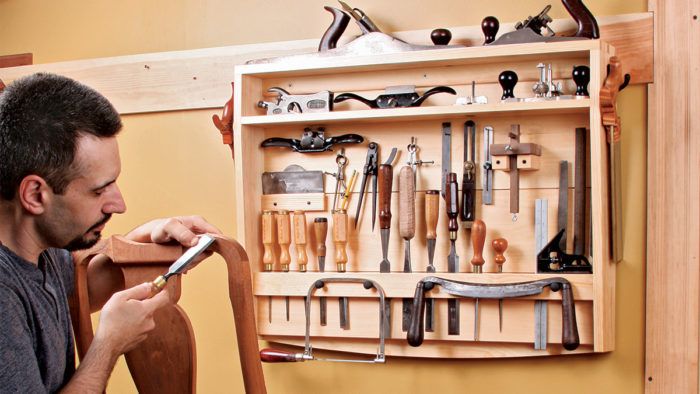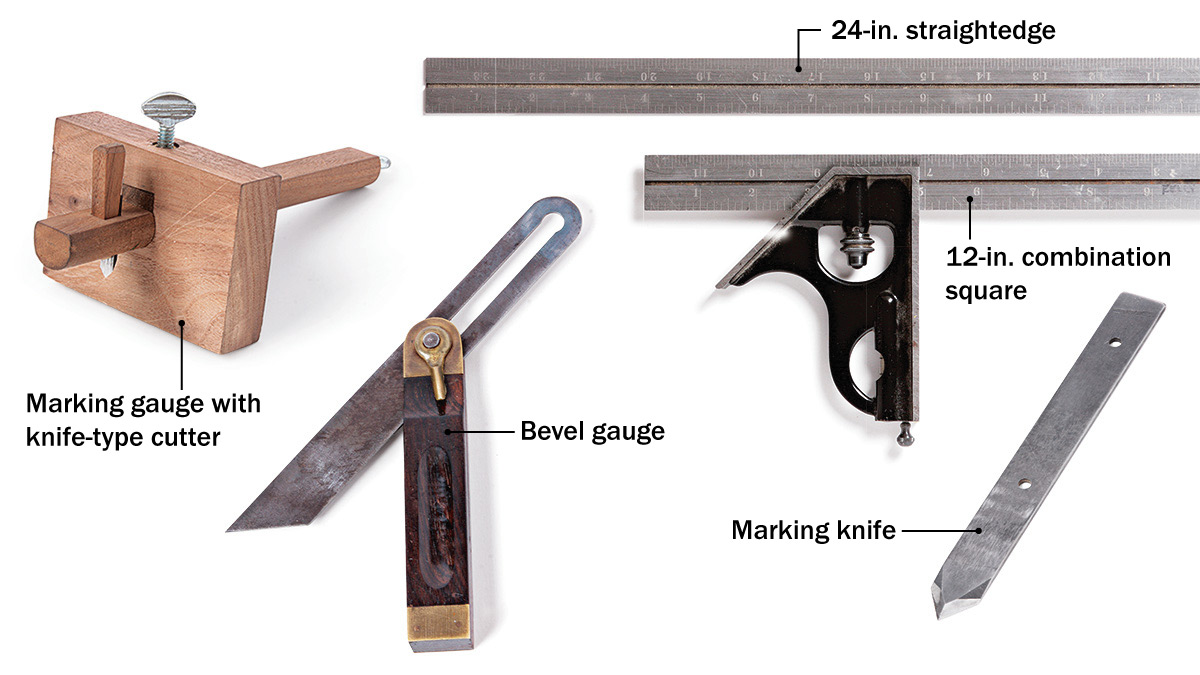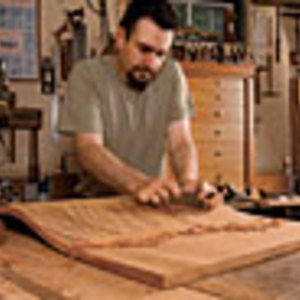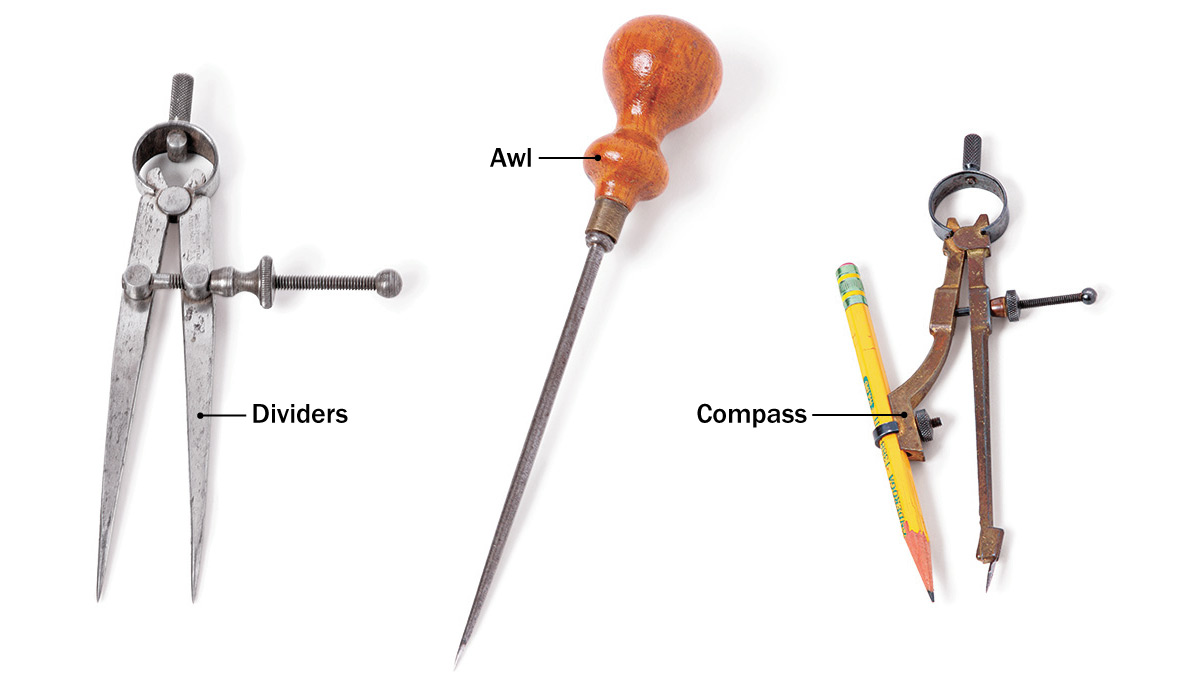Essential Hand-Tool Kit
Furniture maker Dan Faia's comprehensive list of tools is a good starting point for any aspiring hand-tool woodworker.

Synopsis: Whether he’s teaching at North Bennet Street School or working in his home shop, furniture maker Dan Faia wants certain essential hand tools close by. As it happens, the compact tool rack also featured in this issue holds them all. Your list may vary, but this comprehensive list of hand tools for layout, surface prep, shaping, and joinery is a good starting point for any aspiring hand-tool woodworker.
I’ve done all sorts of woodworking in my career, but hand tools have always played a large role. I cannot do my best work without them. Whether working in the big shop at North Bennet Street School, where I teach, using an equal balance of power and hand, or working in my home shop almost exclusively at the bench, my set of essential hand tools is surprisingly similar.
While I was designing the compact tool rack featured in Open Rack for Hand Tools, I gave serious thought to just which tools I rely on, the ones I reach for on a regular basis. Granted, I am a period furniture maker by trade, and I probably work with more curves and carving than the average woodworker. So you might be able to get away without a couple of the items on my list. And some woodworkers will want to add a block plane, for trimming small surfaces and making shaping cuts. I prefer to handle these tasks with the other tools in my kit, but the block plane can be very helpful. To see my kit in action, turn to the tool-rack project.
Layout
Layout tools are the foundation for accurate work, helping me create precise joinery, angles, and curves. They also serve as important references for squareness and flatness.
The combination square is the primary benchmark in the shop. A machinist-quality model is accurate and easy to read. Its many tasks include measuring workpieces, checking them for flatness and squareness, laying out joinery, and setting up machinery.
 At times I attach a 24-in. rule to my square, doubling its length for squaring the ends of wide boards and checking their overall flatness as well.
At times I attach a 24-in. rule to my square, doubling its length for squaring the ends of wide boards and checking their overall flatness as well.
A traditional marking gauge uses a round pin, which can leave a jagged, inaccurate cut across the grain. Mine, called a cutting gauge, has a small, removable knife that is easily sharpened and slices wood fibers cleanly, leaving a perfect pocket to drop a chisel into for final paring. I also use it to cut inlay pieces from veneer.
Used often with the combination square, a marking knife performs the layout tasks that the marking gauge can’t handle, leaving the same crisp, incised line. I like a double-beveled tip, which cuts in both directions.
While the combination square lays out 90° and 45° angles, the bevel gauge does everything in between. I use it when laying out dovetails, angled tenons, and beveled edges.
A pair of dividers is used to transfer dimensions or to space a series of marks evenly, for dovetail layout, for example. Any size or type is OK. The compass looks like dividers, but has a different job. It lays out circles and arcs, leaving a pencil line to guide my handwork.
I use the fine point of an awl to make a dent at the center of a hole, making it easy to drill in an exact location. The awl is also indispensable for precise screw locations when installing hardware.
To view the entire article, please click the View PDF button below.
Fine Woodworking Recommended Products

Jorgensen 6 inch Bar Clamp Set, 4 Pack

Starrett 12-in. combination square

Veritas Wheel Marking Gauge










Comments
Good list for a next step up from truly basic but here is a page missing. It's the 4th page of the article, page 81 of the magazine. Perhaps there is no article content, just a full-page ad??
Yup, it's an ad page
Great list. One year with Christmas gift money, I bought a 24" combo square. I'm surprised at how much use it gets. I also find my 6" combo square gets used as well. I do often use my dividers for laying out dovetails; however, I could get by without them.
I agree a great list. One nit-picky bit: the PDF shown versus the actual article is missing the comment about the fourth dovetail saw from Veritas (only 3 comments are shown). In the original article this text resides beside the headline bit on Western Saws and just below the picture of that 4th dovetail saw...just sayin'.
Log in or create an account to post a comment.
Sign up Log in